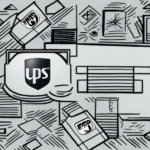Understanding UPS Shipping Rates for Boxes
If you’re in the business of shipping boxes, it’s essential to understand UPS shipping rates. UPS, or United Parcel Service, is one of the most reliable and widely used shipping carriers globally, offering services to both businesses and individuals. With various options tailored for different box sizes and weights, navigating UPS shipping rates can be complex. This comprehensive guide provides detailed insights into calculating UPS shipping rates for boxes, the factors influencing these rates, and strategies to optimize your shipping costs.
What are UPS Shipping Rates for Boxes?
UPS shipping rates refer to the costs associated with sending a box using UPS services. These rates fluctuate based on several factors, including the box’s size and weight, the delivery destination, and the chosen shipping service. UPS offers a diverse range of shipping options to cater to different business needs, whether you’re sending a small package or a large crate.
Factors that Affect UPS Shipping Rates for Boxes
Several variables influence UPS shipping rates for boxes:
- Box Size and Weight: Larger and heavier boxes incur higher shipping costs. UPS employs a dimensional weight calculator to determine shipping fees for packages that occupy more space relative to their actual weight.
- Destination: Longer distances translate to higher shipping costs. UPS provides both international and domestic shipping services within the United States.
- Shipping Service: UPS offers multiple shipping services, each with unique pricing structures. Ground shipping is cost-effective for non-urgent deliveries, while expedited or overnight services come at a premium.
- Package Value: Higher-value items may require additional insurance, affecting the overall shipping rate.
- Fuel Surcharges: Fluctuations in fuel prices can impact shipping costs, as UPS adjusts its rates accordingly.
Understanding these factors is crucial for accurately calculating your shipping expenses.
How to Calculate UPS Shipping Rates for Boxes
UPS provides a user-friendly shipping calculator on their website to estimate shipping costs. To use the calculator:
- Enter the package’s weight and dimensions.
- Provide the origin and destination addresses.
- Select the desired shipping service.
- Review the estimated shipping cost based on your selections.
While the calculator offers a reliable estimate, actual shipping costs may vary due to additional factors like fuel surcharges or modifications in service rates.
Understanding the Different Types of UPS Box Shipping Options
UPS offers a variety of shipping options to meet diverse needs:
- Ground Shipping: The most economical option, ideal for non-urgent shipments. Delivery typically takes 1-5 business days within the U.S.
- Expedited Shipping: Includes services like UPS 2nd Day Air and 3 Day Select, offering faster delivery at a higher cost.
- Overnight Shipping: The fastest option, perfect for urgent deliveries. Services include Next Day Air and Early AM deliveries.
- International Shipping: Tailored for global shipments, offering various delivery speeds and customs handling.
Selecting the appropriate shipping option depends on your specific requirements for speed and budget.
Comparing UPS Shipping Rates with Other Shipping Carriers
It’s beneficial to compare UPS shipping rates with other shipping carriers like FedEx and USPS to ensure you’re getting the best value:
- UPS: Known for reliability and extensive tracking capabilities, UPS may offer better rates for heavy or bulk shipments.
- FedEx: Often competitive in express shipping services, FedEx can be advantageous for time-sensitive deliveries.
- USPS: Generally more cost-effective for smaller, lighter packages, especially for residential deliveries.
Each carrier has its strengths, so evaluating based on your shipping volume, package characteristics, and delivery expectations is essential.
Tips for Reducing UPS Shipping Costs on Boxes
Implementing the following strategies can help lower your UPS shipping expenses:
- Optimize Packaging: Use appropriately sized boxes and lightweight packing materials to minimize dimensional weight charges.
- Leverage Discounts: UPS offers discounts for high-volume shippers and small businesses. Enrolling in UPS My Choice or negotiating rates can lead to significant savings.
- Use Third-Party Logistics Providers: These providers can negotiate better rates on your behalf and manage shipping logistics more efficiently.
- Ship Consolidated Packages: Combining multiple orders into a single shipment can reduce per-unit shipping costs.
Adopting these practices can lead to substantial cost reductions in your shipping operations.
Common Mistakes to Avoid When Using UPS for Box Shipping
To ensure efficient and cost-effective UPS box shipments, avoid these common errors:
- Incorrect Box Measurements: Always verify the dimensions and weight of your box to prevent unexpected fees.
- Poor Packing: Inadequate packing can lead to damage or rejection of the shipment.
- Missing or Illegible Labels: Ensure shipping labels are clear, accurate, and securely attached to facilitate smooth delivery.
- Ignoring Insurance Options: Valuable items should be insured to protect against potential loss or damage.
By steering clear of these mistakes, you can enhance the reliability and efficiency of your UPS shipments.
How to Prepare Your Boxes for UPS Shipping to Save Money
Properly preparing your boxes can lead to significant savings on UPS shipping rates:
- Choose the Right Box Size: Select a box that snugly fits your item to avoid dimensional weight charges and reduce the need for excess packing materials.
- Use Lightweight Packing Materials: Materials like bubble wrap or packing peanuts provide protection without adding unnecessary weight.
- Remove Old Packaging: Reusing existing boxes is cost-effective, but ensure they’re in good condition to prevent damage during transit.
- Seal Boxes Properly: Use strong packing tape to secure all openings, ensuring the box remains intact during shipping.
Implementing these preparation steps can help minimize shipping costs and protect your items during transit.
Understanding the Different Types of Insurance Options when Using UPS for Box Shipping
UPS provides various insurance options to safeguard your shipments against loss or damage:
- Declared Value Coverage: Automatically included and covers up to $100 per package at no additional cost.
- Declared Value Protection: Offers coverage beyond $100, tailored to the full value of the package for an extra fee.
- Additional Insurance: For high-value items like electronics, jewelry, or artwork, UPS offers specialized insurance options to ensure comprehensive coverage.
Choosing the appropriate insurance level is crucial, especially when shipping valuable or fragile items.
How to Track Your UPS Box Shipments and Stay Updated on Delivery Times
Staying informed about your shipments enhances reliability and customer satisfaction. UPS offers multiple tracking functionalities:
- Tracking Number: Each UPS shipment is assigned a unique tracking number, allowing real-time tracking via the UPS Tracking tool on their website or through the UPS mobile app.
- Delivery Alerts: Sign up for email or SMS notifications to receive updates on your package’s status, including estimated delivery times and any potential delays.
- Access Point Network: Utilize UPS Access Points for flexible delivery options, enabling you to pick up packages at nearby locations at your convenience.
- Interactive Maps: Visualize your package’s journey with UPS’s interactive tracking maps, providing a clear view of its progress.
Leveraging these tracking tools ensures you remain informed and can promptly address any delivery issues.
Best Practices for Packaging and Labeling Your Boxes When Using UPS for Shipping
Adhering to best practices in packaging and labeling guarantees the safe and timely arrival of your shipments:
- Select a Sturdy Box: Use high-quality, durable boxes that can withstand the rigors of shipping without compromising the contents.
- Secure Packing: Ensure items are tightly packed with appropriate cushioning to prevent movement and damage during transit.
- Clear Labeling: Place shipping labels on the largest side of the box, ensuring they’re free from obstructions and easy to scan.
- Include Documentation: For international shipments, attach all necessary customs forms and documentation firmly to the exterior of the box.
Implementing these packaging and labeling strategies minimizes the risk of delays and damages, ensuring a smooth shipping experience.
How to Optimize Your eCommerce Store for Effective Pricing and Use of UPS Box Shipping
For eCommerce businesses, optimizing shipping strategies can enhance customer satisfaction and profitability. Consider the following tips:
- Offer Free Shipping Thresholds: Encourage larger orders by providing free shipping for purchases exceeding a specific amount.
- Integrate UPS Shipping: Utilize eCommerce platforms that seamlessly integrate with UPS, facilitating accurate shipping rate calculations and effortless label printing.
- Automate Shipping Processes: Streamline order fulfillment with automated shipping solutions, reducing errors and saving time.
- Provide Multiple Shipping Options: Offer a range of shipping speeds and prices to cater to diverse customer needs.
- Monitor Shipping Performance: Regularly analyze shipping metrics to identify areas for improvement and cost-saving opportunities.
By optimizing your eCommerce store’s shipping processes, you can enhance the customer experience while managing costs effectively.
A Step-by-Step Guide on How to Ship a Box Using UPS Services
Follow these steps to efficiently ship a box using UPS services:
- Measure and Weigh Your Box: Accurately determine the dimensions and weight to ensure precise shipping rates.
- Choose the Appropriate Shipping Service: Select a UPS service that aligns with your delivery timeframe and budget.
- Prepare the Package: Pack your items securely, ensuring they’re protected and the box is properly sealed.
- Label the Box: Affix a clear and accurate shipping label to the box, including all necessary information.
- Drop Off or Schedule a Pickup: Take your package to a UPS location or arrange for a pickup at your convenience.
- Track Your Shipment: Use the provided tracking number to monitor your package’s progress until delivery.
- Confirm Delivery: Ensure the recipient has received the package and address any issues promptly.
Adhering to these steps ensures a smooth and efficient shipping process with UPS.
Conclusion – Key Takeaways on Understanding UPS Shipping Rates for Boxes
Navigating UPS shipping rates for boxes involves understanding various factors such as box size and weight, destination, and chosen shipping service. Utilizing tools like the UPS shipping calculator can aid in estimating costs, while selecting the right shipping options can balance speed and budget. Implementing cost-saving strategies, avoiding common shipping mistakes, and adhering to best practices in packaging and labeling further enhance efficiency and reliability. For eCommerce businesses, optimizing shipping processes is crucial for customer satisfaction and profitability. By staying informed and proactive, you can effectively manage UPS shipping rates and ensure seamless delivery operations.






